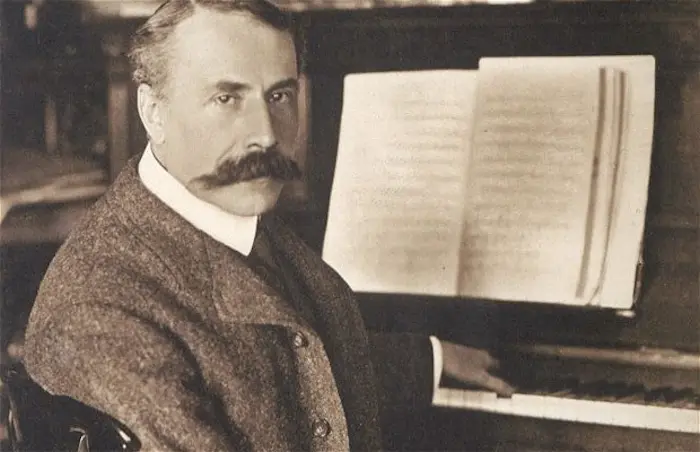Sir Edward Elgar’s “Pomp and Circumstance Marches” are iconic pieces of classical music that have become synonymous with British pride and tradition. Composed between 1901 and 1930, these marches are celebrated for their grandeur and patriotic fervor. This article delves into the historical context, musical structure, and cultural significance of these marches, with a focus on their enduring legacy.
I. Historical Context
1. The Early 20th Century Britain
The early 20th century was a time of significant change and national pride in Britain. The country was a global power, with a vast empire. During this period, music played a crucial role in expressing national identity. Elgar’s “Pomp and Circumstance Marches” fit perfectly into this narrative, becoming anthems of British patriotism.
2. Elgar’s Background and Inspiration
Edward Elgar was born in 1857 in a small village near Worcester, England. He came from a modest background but showed immense musical talent from a young age. His compositions often reflected his deep love for his country. The title “Pomp and Circumstance” is derived from a line in William Shakespeare’s play “Othello”: “Pride, pomp, and circumstance of glorious war!” This allusion to martial glory and national pride captures the essence of the marches.
3. Composition and Premiere
The first of the “Pomp and Circumstance Marches” premiered on October 19, 1901, in Liverpool. It was an immediate success, with its stirring melodies and grand orchestration. Elgar composed five marches in total, though only the first two achieved widespread popularity during his lifetime. The remaining three were composed later, with the fifth march completed in 1930.
II. Musical Structure
1. March No. 1 in D Major
The first march is perhaps the most famous, particularly the “Land of Hope and Glory” trio section. This section features a noble and uplifting melody, which has been adopted as a patriotic song and is often performed at British ceremonies and graduations worldwide.
Analysis of March No. 1
The march begins with a robust, energetic theme, characterized by brass fanfares and rhythmic drive. The central trio section introduces the famous “Land of Hope and Glory” melody, which is marked by its lyrical and expansive quality. This section is typically repeated, each time with more elaborate orchestration, culminating in a grand, triumphant finale.
2. March No. 2 in A Minor
The second march is more subdued compared to the first. It opens with a somber, reflective theme, which contrasts sharply with the lively, spirited middle section. This march showcases Elgar’s ability to blend contrasting moods within a single piece.
Analysis of March No. 2
The second march is notable for its emotional depth. The opening theme is introspective and melancholic, featuring delicate string passages and muted brass. The middle section provides a stark contrast with its brisk, dance-like character. The return to the opening theme in the final section brings a sense of resolution and unity to the piece.
3. Marches No. 3, 4, and 5
The remaining marches, though less frequently performed, are equally rich in musical content. The third march in C minor has a majestic quality, with bold brass and sweeping strings. The fourth march in G major is light-hearted and joyful, with playful rhythms and bright orchestration. The fifth march in C major, composed much later, revisits themes from the earlier marches, creating a sense of nostalgia and continuity.
III. Cultural Significance
1. “Land of Hope and Glory”
The trio section of the first march, “Land of Hope and Glory,” has taken on a life of its own. The lyrics, written by A.C. Benson, celebrate the British Empire and its values. This song is a staple at the Last Night of the Proms, a famous annual concert held at the Royal Albert Hall in London. It has become an unofficial anthem for the British people, symbolizing national pride and unity.
2. Use in Ceremonies and Graduations
Beyond its patriotic associations, the “Pomp and Circumstance March No. 1” is widely recognized as the standard processional music for graduation ceremonies in the United States and other countries. Its stately, dignified character makes it an ideal choice for such occasions, adding a sense of grandeur and solemnity to the proceedings.
3. Influence on Popular Culture
Elgar’s marches have also permeated popular culture. They have been used in films, television shows, and advertisements, often to evoke a sense of tradition and formality. The recognizable melodies have become part of the collective consciousness, symbolizing achievement and celebration.
4. Legacy of Edward Elgar
Elgar’s “Pomp and Circumstance Marches” are a testament to his genius as a composer. They demonstrate his ability to create music that resonates with people across different generations and cultures. These marches continue to be performed and cherished, cementing Elgar’s legacy as one of Britain’s greatest composers.
See Also: A Deep Dive into the Era of Classic Music: All You Want to Know
IV. Conclusion
Sir Edward Elgar’s “Pomp and Circumstance Marches” stand as a monumental achievement in classical music. Their stirring melodies, grand orchestration, and deep emotional resonance have made them timeless pieces that continue to inspire and uplift audiences worldwide. As symbols of British pride and tradition, they hold a special place in the hearts of many, embodying the spirit of a nation and the enduring power of music.

